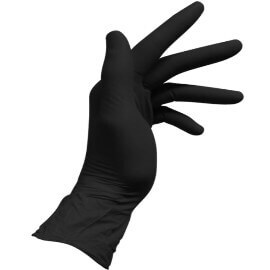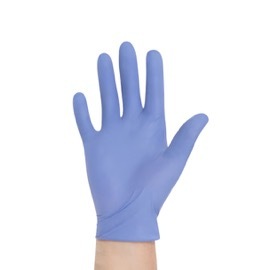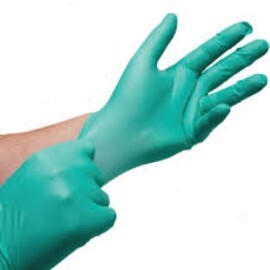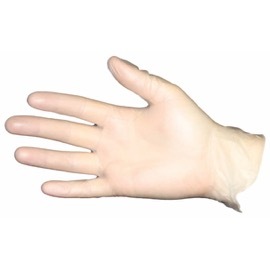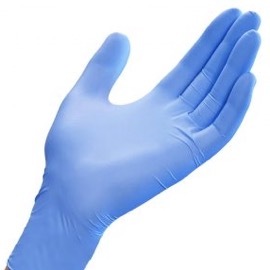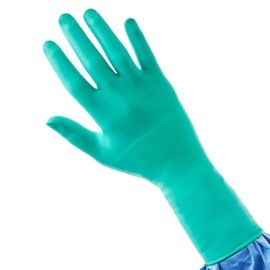FAQs
What is the shelf life of disposable gloves?
The lifespan of disposable medical gloves typically ranges from three to five years, depending on material and storage practices.
Nitrile gloves have the most extended lifespan and may last up to five years due to their synthetic composition, which provides strong resistance to chemicals such as oils, acids and solvents. Latex medical gloves made from natural rubber deliver excellent elasticity and protection against water-based chemicals and biohazards, though they degrade faster when exposed to heat, light or oils. While latex-free and suitable for those with allergies, vinyl gloves lack the same durability as latex gloves and are better suited for short-term, low-risk tasks.
Storing all gloves in cool, dry conditions helps extend their lifespan and maintain quality. For more information about your disposable medical gloves, refer to the manufacturer's guidelines.
How are medical gloves sterilised?
These medical gloves undergo thorough sterilisation to ensure they are free from harmful contaminants, making them suitable for use in high-risk situations like surgeries.
Methods of sterilisation include:
- Ethylene oxide (EtO) gas — The standard method for heat-sensitive materials, EtO gas sterilises by penetrating the glove material and neutralising bacteria, viruses and fungi.
- Gamma radiation — This technique uses high-energy radiation to disrupt the DNA of microorganisms, ensuring sterility without using heat.
- Steam autoclaving — High-pressure steam kills pathogens and is mainly applied to heat-resistant materials, such as nitrile gloves.
These sterilisation methods ensure that medical gloves meet the rigorous sterility standards required in healthcare.
What are the symptoms of latex allergies?
When using latex medical gloves, individuals with a latex allergy can experience various symptoms, which range from mild to severe:
- Mild symptoms — Wearing latex medical gloves can cause mild allergic reactions, such as itching, redness, hives or rashes. These symptoms occur when the gloves make contact with the skin.
- Moderate reactions — Inhaling latex particles may result in sneezing, runny nose, watery eyes, coughing or respiratory discomfort. These symptoms are more common in environments with prolonged exposure to latex gloves.
- Severe reactions — In rare cases, exposure can lead to anaphylaxis, a life-threatening reaction involving difficulty breathing, chest tightness, swelling of the face or throat and a significant drop in blood pressure.
Individuals with latex allergies should opt for medical glove alternatives like nitrile and vinyl gloves to avoid allergic reactions and maintain safe work environments.
How do I choose the best size of medical gloves?
When choosing medical gloves, finding the right size for a snug but comfortable fit that allows for dexterity and movement is essential. Sizes typically range from small to extra-large. Some products on our website have sizing charts that let you measure the circumference of your hand across the palm to determine the best fit. If a sizing chart isn't available for a specific product, it's best to consult the manufacturer's guide or make an estimate based on standard sizes. Wearing well-fitted medical gloves enhances both comfort and protection.
If you need further assistance, please contact us at 1300 783 747.
Can disposable medical gloves be reused?
No, disposable medical gloves are designed for single use and should not be reused. Reusing gloves compromises their integrity, increases contamination risk and reduces their protective capabilities. Whether you are wearing nitrile, latex, surgical or latex-free gloves, disposable non-medical and medical gloves can lose their effectiveness and integrity after being worn just once.
To maintain hygiene and safety, medical gloves should be discarded after each use — especially in environments like healthcare, food handling or situations where you are exposed to hazardous materials.
How do I properly use and dispose of medical gloves?
- Correct usage — Glove usage is crucial for maintaining hygiene and safety in medical, industrial and food-handling settings. Medical gloves should be used for a single task and changed immediately afterwards to prevent cross-contamination.
- Safe removal techniques — Proper glove removal is crucial to avoid contaminant exposure. Begin by pinching one glove at the wrist without touching your skin, pulling it inside out, and holding it with the other hand. Then, slide your ungloved fingers under the wrist of the remaining glove, peeling it off over the first glove. Discard both medical gloves in the designated waste bin.
- Disposal methods — Proper disposal of medical gloves, including vinyl and nitrile gloves, is essential. Nitrile gloves, which may be used in certain chemical handling situations, should be disposed of according to local guidelines for medical or hazardous waste when exposed to biohazards or specific contaminants. For everyday tasks, discard gloves in regular waste bins after use, but always wash your hands thoroughly after removing gloves to prevent contamination.
By following these simple guidelines, you can ensure the safe and responsible use of disposable medical gloves in a medical, industrial or other professional environment.

